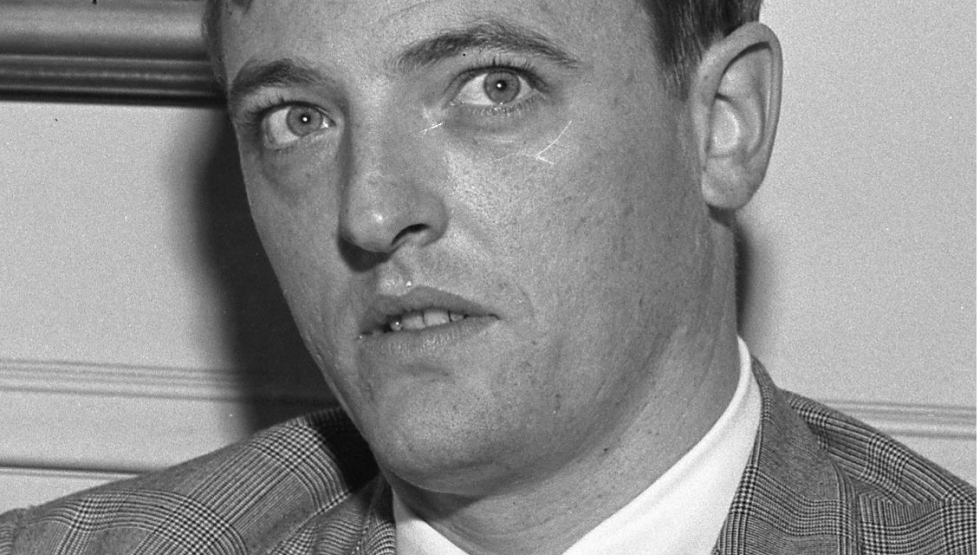“Have you ever wanted to become a Catholic?” Muriel Spark wrote to Derek Stanford on 6 February 1949. “I would if I could find Faith. I shall set out on a pilgrimage, I think, turning over small stones and leaves [...] searching for Faith.” The tone was light-hearted, despite the fact that she had just been sacked from the Poetry Society, and relations with her lover, the poet Howard Sergeant, were terminally acrimonious. In a sense she was converting from Sergeant to Stanford as her confidant and courtier.
Stanford, too, was to become a class-A bête noire but, although she found love with him, she could not in 1949 find faith, and it was only in 1954 that she converted to Roman Catholicism. How did this happen?
As her first biographer, I wanted to unravel this but found Muriel reluctant to discuss it, perhaps because her reception on 1 May 1954 coincided with mental breakdown. Her autobiography Curriculum Vitae (1992) elided any religious “passion” and the severity of the mental collapse. I was interested, then, to see what two important recent books — Frances Wilson’s Electric Spark (Bloomsbury, 2025) and volume one of Dan Gunn’s edition of The Letters of Muriel Spark (Virago, 2025) — had to say on her conversion. Both add considerably to the overall story of her life. Wilson, however, largely ignores Muriel’s religious thinking and quotes only sparingly from the letters, while Gunn keeps a cool scholarly distance. At last, though, we have her letters, by turns amorous, vitriolic, ingeniously reflective, witness to terrible suffering and to joy. And those for 1949–54 are crucial to understanding how she became a Catholic.
Frank Kermode, a big Spark fan, once stated that she was a “theological” rather than a “religious” writer. And this is what we see here: a mind headbutting mindless acceptance of dogma, an exile and an enigma seeking a way to fit into the religious community without allowing it to invade her privacy. Job is her hero, the man unjustly punished, whose comforters insist that, as God is omniscient, he must have sinned. She was writing a book on the subject when she was overtaken by persecution mania.
Gunn’s editorial principles allow only for the reproduction of complete texts, with reference to others in footnotes. This avoids repetition but necessarily leads to omissions, in particular a letter dated 21 May 1954, just three weeks after her reception, addressed to the Ministry of National Insurance which had disallowed Muriel’s claim for National Health benefit. This, and an interview with W. J. Weatherby, “My Conversion”, are rare public statements in which Muriel admitted to breakdown. In her private letters to friends — Alan Barnsley (Gabriel Fielding), June and Neville Braybrooke, Iris Birtwistle, Christine Brooke-Rose and Jerzy Peterkiewicz — she talked frankly about it. But later she wanted that story removed from the record and always refused permission to quote from the Weatherby discussion.
The 21 May letter, however, is clear. “So far as I am able to describe my condition,” it ran, “now that I am recovered, of course it seems to me rather absurd, but it was very real at the time... Briefly, the trouble was that I began to imagine secret codes in everything I read, even in the press.” In fact, she hadn’t “recovered”, as these letters testify. The cause, she said, was “overwork”, which certainly contributed to her stress. But there were other large issues: using dexadrine to lose weight and to keep her alert and writing through the night; anxieties about her son, Robin; an unquenchable distaste for her mother who had taken over as his mother in Edinburgh; accusations from a range of enemies that she was manipulative, mendacious, talentless, immoral. All lies, of course, damned lies, but they nevertheless shattered her equanimity like a choir of disembodied devils. Even Sergeant had joined their crew. Her symptoms resembled those of schizophrenia.
Throughout all this, Stanford was her chief support. Her spiritual adviser had insisted that to become a Christian she must cease sexual relations with him until they were married, a terrible deprivation to both. “As lovers we were all right on the sexual side,” she wrote to him, “but hopeless on the intercommunication side of lovers’ minds.” Nevertheless, marriage was her plan — if he could follow her into the Church. Thanks to money supplied by Birtwistle, a cradle Catholic and significant influence on Muriel’s drift towards Rome, Muriel had broken cohabitation. Stanford had attended her Anglican baptism on 7 November 1952 and her confirmation in April 1953, but not her reception as a Catholic a year later. Nevertheless, he stuck with her, raising a “plight fund” to which Graham Greene and the editor of The Observer, David Astor, contributed. This money enabled her retreat to a cottage to write her first novel, The Comforters (1957). It depicted a female convert suffering paranoid delusions and trying spiritually to negotiate her uncharitable loathing for the self-righteous Mrs Hogg, another cradle Catholic. Evelyn Waugh and Greene loved it, and from that point she was established as a major voice of British fiction.
Astor was an important figure in this transformation. It was The Observer that had awarded Muriel first prize in their 1951 Christmas story competition for The Seraph and the Zambesi. He was one of the judges. “Do you like my Seraph,” she wrote to Birtwistle, “a very Catholic one, Derek says.” And it was, as were several of her poems at the time, particularly The Nativity and The Ballad of the Fanfarlo. But she still didn’t have faith. What interested her was the slippage between the physical and the metaphysical, and, as an artist, between the literal and the metaphorical. The literal for her was not truth.
As we follow her 1950s letters, we find these themes translating into a theological debate mistrustful of blind faith. On 31 May 1954, she wrote to Stanford as “Dearest Brother Mine”:
“... honest doubts are the very life-blood of faith to me... [A]s an Anglo-Catholic I found the company of Catholics invigorating, for it expressed a testimony to those supernatural aspects of life which I knew to be realities. [Now] I find myself moving away from the attitudes of my Catholic friends [who] tend to be unconsciously always on the apologetic... There is an inbred fear of betraying the Faith. I am of the type of Catholic who must take recourse to the living waters of the defining mind, and what is the defining mind but one that ‘doubts well’?”
As the material world slipped from her, she knew that, in her art, she had to hang on to it, like Proust, as a pattern of sacramental symbols. Her letter was written the day after her confirmation, which Stanford also didn’t attend. She had desperately wanted him to. So she lost him, and all hope of a “normal” family life, for her faith. All he could do was to watch her disappear over the horizon, not drowning but waving.




.jpg)



.jpg)
.jpg)






